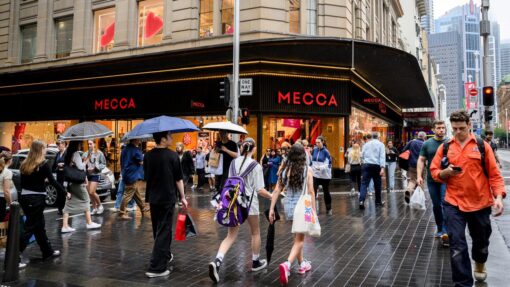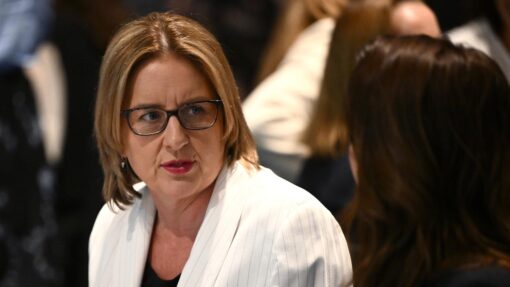Market turmoil could stoke inflation: Future Fund
Adrian Black |

Geopolitical tensions, trade barriers and market uncertainty could stoke inflation and keep the price of credit high, Australia’s sovereign wealth fund has warned.
Announcing the Future Fund’s quarterly investment results, chief executive Raphael Arndt said market conditions remained challenging
“We are seeing consequential changes in geopolitical, economic and market environments at the moment and that is causing volatility and uncertainty for investors,” Dr Arndt said on Tuesday.
“Our expectation is that these conditions will lead to higher inflation and bond yields for an extended period.”
The Future Fund reached a record value of more than $240 billion by March 31, after securing 7.9 per cent returns in the 12 months prior.
The result beat its mandated 10-year target of 6.9 per cent and grew its total funds under management to $307 billion.
By comparison, the S&P/ASX200 rose just over two per cent in the 12 months to April, or almost nine per cent in the 2024 calendar year, when the Future Fund improved by 12.2 per cent.

The organisation’s other funds include the Medical Research Future Fund, valued at $24 billion, the $10.8 billion Housing Australia Future Fund, the DisabilityCare Australia Fund, worth almost $20 billion and the $4.7 billion Disaster Ready Fund.
The Future Fund was established in 2006 by former federal Liberal treasurer Peter Costello after the sale of Telstra to strengthen the Commonwealth’s financial position and cover the costs of burgeoning public sector pension payments.
In the broader economy, Australia’s building recovery has stalled, with approvals falling 8.8 per cent to 15,220 in March, according to the Australian Bureau of Statistics.
The result significantly overshot expectations of a 1.7 per cent drop.
Private sector dwelling approvals fell 4.5 per cent to 8,804, led by Victoria (-10 per cent) and Queensland (-8 per cent), as Western Australia bucked the trend with a 10 per cent lift.
“Building approvals have recovered significantly throughout 2024 and despite last month’s weakness, total building approvals are still running at around 195,000 per annum or a 23 per cent increase from the trough in early 2023,” AMP economist My Bui said.

“Meanwhile, Australia’s population growth is now slowing from lower net migration, which means that dwelling approvals are now running at a comparable pace to additional housing demand which is very welcomed.”
The outlook for building approvals remains optimistic, amid improving consumer and business sentiment and easing materials and labour cost growth.
Quarterly figures confirmed approvals were on the up but had a long way to go.
“There were 48,620 new homes approved for construction in the first quarter of 2025, up by 20.8 per cent on a year earlier,” Housing Industry Association senior economist Tom Devitt said.
“Despite the improving numbers over the last year, building approvals are still running at around 180,000 per year, well short of what is required to commence 1.2 million homes over 5 years.”

Household spending also fell in March by 0.3 per cent after rising for five months in a row.
“Queensland saw a 1.3 per cent fall in spending, as ex-tropical cyclone Alfred impacted parts of the state,” ABS business statistics head Robert Ewing said.
“Transport and Health spending were especially affected, falling 3.9 per cent and 3.3 per cent respectively.”
The states were mixed, with spending in NSW and South Australia down 0.3 per cent, but it was up in the ACT (0.6 per cent) and Victoria (0.4 per cent).
“Despite a dip in these latest figures, next month could be a very different story with the results of April spending to include the extended Easter and Anzac holiday period,” Canstar spokeswoman Eden Radford said.
AAP


